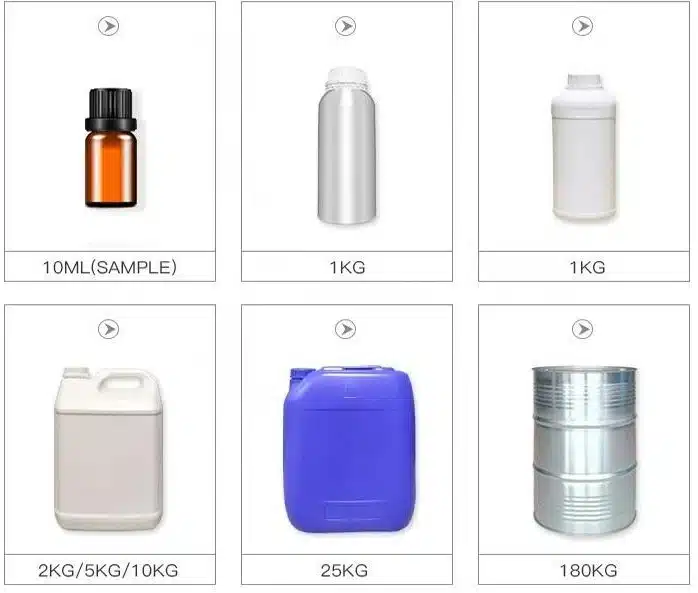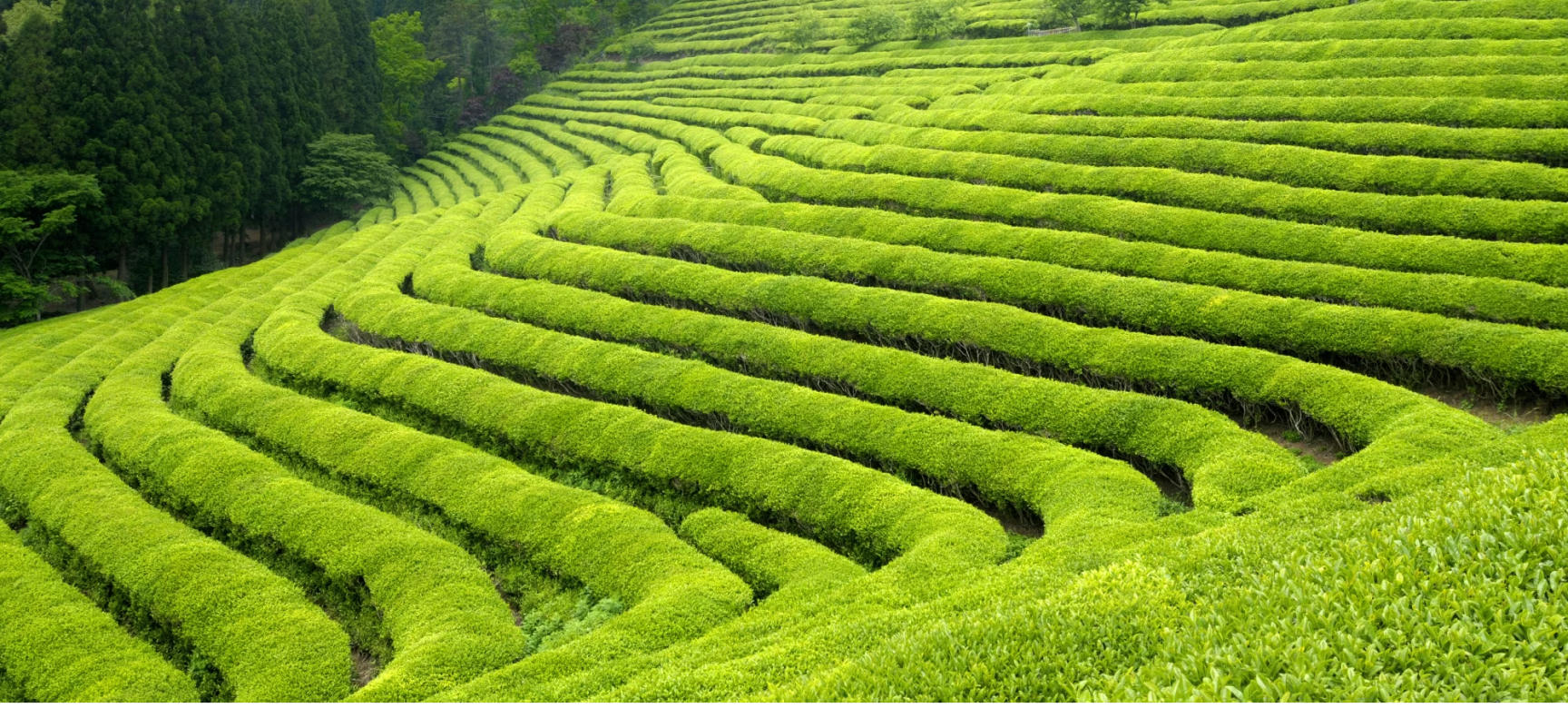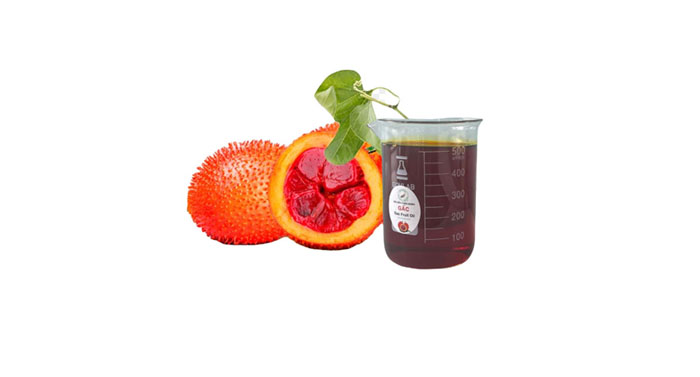
Gac oil
Category:
- CAS :
- Science name : Momordica cochinchinensis
- Taste, Color : Characteristic smell of gac. Red
- Origin : Vietnam
- Extraction method : Press
- Main ingredient : DHA, Vitamin E, Lycopen, Beta Caroten
- Components Extracted : Dried ripe gac arils
Plant Characteristics and Growing Areas
Gac, scientifically known as Momordica cochinchinensis, belongs to the Cucurbitaceae family. Gac is a climbing plant belonging to the bitter gourd genus. Its characteristic is to climb on pergola, bush edges, wherever there is something for the plant to cling to. Gac tree climb quite strong, with lengths reaching up to 15m. It is a dioecious species, meaning it has separate male and female plants. Gac leaves are smooth, ranging from 8 to 18cm in length. The flowers come in two types: female and male flowers, both with pale yellow petals. The fruit is round, green when young, and turns reddish-orange when ripe, with a diameter of about 15 – 20cm. The gac fruit has many small spines on its skin. When opened, each fruit typically contains 6 segments. The flesh of gac is reddish-orange, and its seeds are dark brown, flat, and grooved. Vietnamese gac is rich in carotenoids and lycopene.
Gac can be cultivated throughout Vietnam, from the North to the South, in provinces and cities such as Dien Bien, Thai Binh, Lai Chau, Tuyen Quang, Hai Duong, Bac Giang, Dak Lak, Dak Nong, Gia Lai, etc. The main source regions for VIPSEN are Tuyen Quang, Hai Duong, and Bac Giang.


HARVESTING
The growing cycle of gac from sowing to harvesting is 9 months to 1 year. The plant thrives best in alluvial land with good drainage. In Vietnam, gac is typically grown in a climbing pergola. Gac prefers cool, flat land and requires regular irrigation. It is planted in straight rows, with each plant spaced about 3-4m apart, and rows spaced 4 – 5m apart.
In the northern region, gac is usually planted in February – March. For the southern and Central Highlands regions, gac is often planted in the rainy season, in moist, irrigated land. When the vines grow to about 30 – 40 cm, they need to be trained to climb onto the pergola, with the shoots evenly dispersed. Regular checks should be made on the roots, retaining those with many fruits after the first year. At the end of the flowering season, pruning off branches without flowers will facilitate the growth of larger fruits. Regular weeding around the base and light soil tilling 25 – 30 cm from the base are necessary to stimulate root growth.
Gac flowers in early June; fruits start to appear in July, August, and the harvesting season lasts from September to February of the following year. In years with less rain, gac fruits ripen early, while in rainy years, they ripen later (around October). Gac is a fruit that does not ripen uniformly, so the harvesting period is prolonged. However, each year, gac is harvested only once, making it less common than other fruits.
GAC OIL PRODUCTION
The raw material for gac oil production is ripe gac arils. These arils are dried and then pressed using hydraulic presses to extract gac oil. Pure gac oil has a red color and a natural fragrance from the ripe gac arils.
The main components include Beta Carotene 0.15% – 0.2% (15.1 times higher than carrots), Lycopene (68 times higher than tomatoes), Vitamin E (Alphatocopherol 0.12%). In addition, gac oil contains various plant fats and beneficial microelements for the human body: Oleic (14.4%), Linoleic (14.7%), Palmitic (33.38%), …


APPLICATIONS
Food Industry:
– Gac oil, being a vegetable oil, is often used in daily cooking. It can be mixed into salads to enhance flavor, or added to milk, flour, porridge, etc., for children to prevent vitamin deficiencies and malnutrition, and to promote eye health.
– Gac oil, rich in nutrients and vitamins, is used in the production of dietary supplements.
– Gac oil is used as a natural food colorant to replace chemical additives in food and fast food processing facilities.
Beauty and Personal Care Industry
– Gac oil is used to prevent and treat dark skin, melasma, acne, dry skin, rough and scaly skin. It nourishes and protects the skin, keeping it rosy, youthful, and smooth. It also prevents hair loss and makes hair soft.
– Gac oil enhances skin immunity, protecting it from harmful environmental factors such as sunlight, dust, pollution, etc. Its components such as Beta-Carotene and Lycopene are carotenoids, plant antioxidants that remove dead cells, smooth the skin, prevent skin cancer, and other inflammatory diseases.
Pharmaceuticals
– Gac oil helps prevent diabetes, lowers cholesterol levels in the blood, and supports the prevention of hepatitis, cirrhosis, and precancerous lesions.
– Gac oil, rich in vitamins, quickly improves anemia, malnutrition, enhances immunity, anti-aging, and provides essential nutrients for the body.
– It supports eye health, treating dry eyes, blurred vision, and night blindness.
– Moreover, gac oil can quickly heal wounds and burns.
PACKING, STORAGE & TRANSPORTATION SPECIFICATIONS
Packaging: Gac oil is packaged in Liters or Kg depending on customer requirements: 1L, 5L, 10L, 30L, 180L/ 1Kg, 5Kg, 10Kg, 30Kg, 180Kg…
Storage: Product is contained in standard HDPE packaging. Store in a cool, dry place, away from direct sunlight. Do not let essential oils fall into your eyes, open wounds, or sensitive skin areas.
Shipping: Domestic: Flexible shipping nationwide by train, car, plane…
Export: Ship/Airplane, Export conditions: FOB/ CIF/Door to door…















